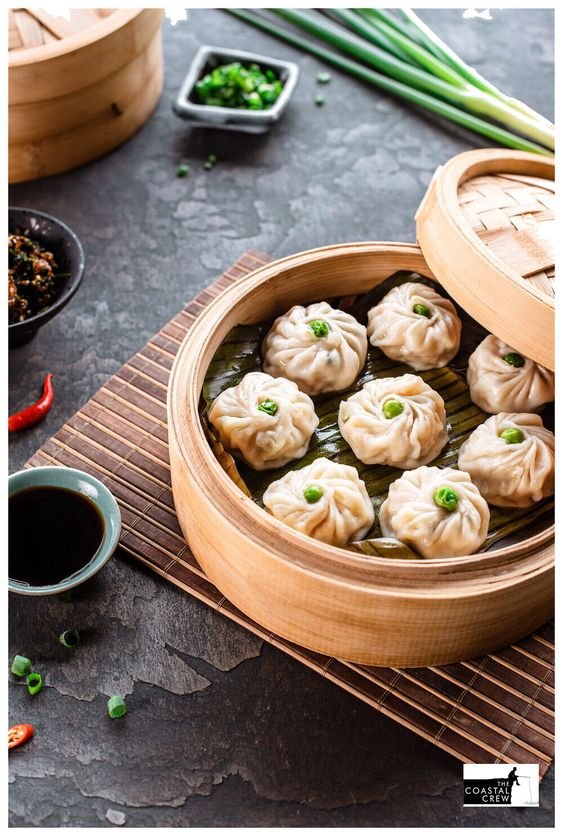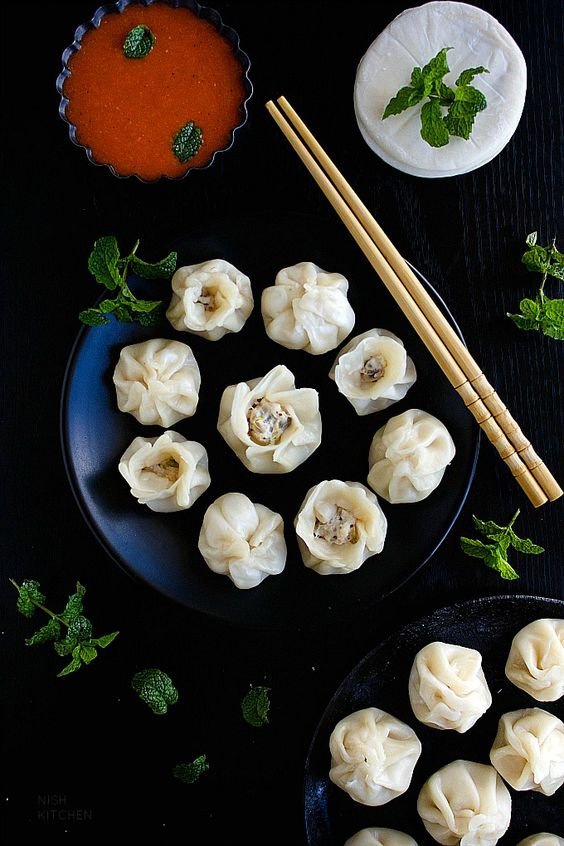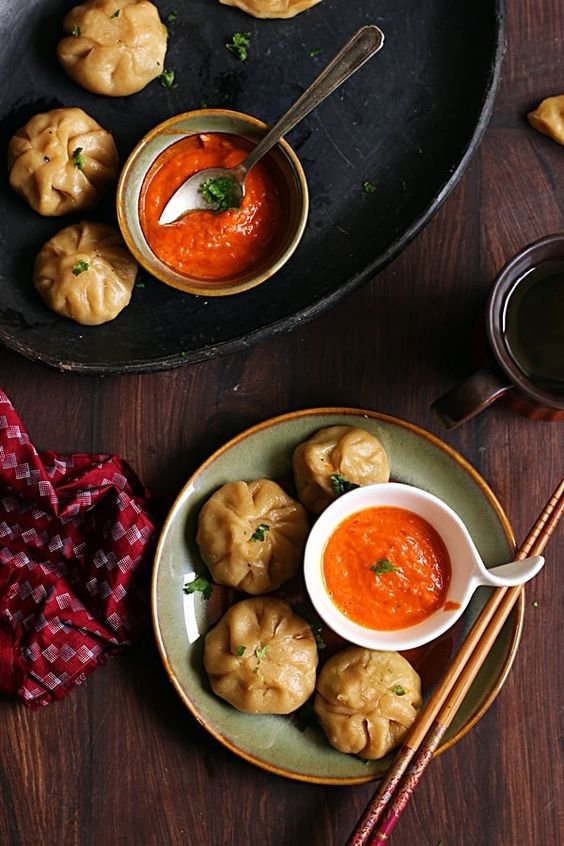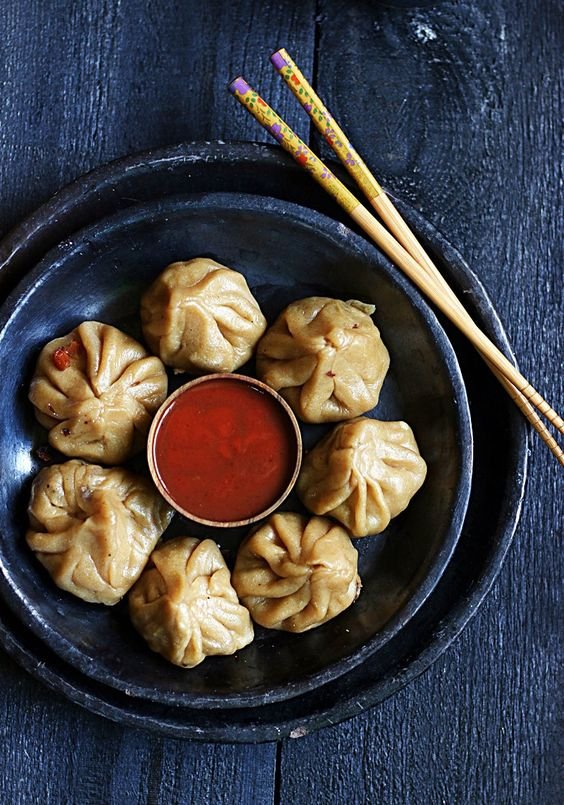Momos: From the Himalayan Highlands to Global Gastronomy

Momos, the delectable dumplings with their tender wrappers and flavorful fillings, have become a beloved culinary sensation enjoyed by millions around the world. Originating in the Himalayan regions of Tibet, Nepal, and Bhutan, momos have transcended geographical boundaries to become a cherished street food and restaurant staple in various countries. In this blog, we embark on a savory journey to explore the history and origin of momos, uncovering the cultural significance and evolution that have made them an irresistible global delight.

Ancient Origins in the Himalayas
The origins of momos can be traced back to the Himalayan regions, where they were born out of necessity and resourcefulness. The word “momo” itself is believed to have been derived from the Tibetan word “mog mog,” meaning “to eat greedily.” The Dumpling, as momos are known in some regions, can be attributed to Tibetan and Nepali communities.
- Tibet: In Tibet, momos have been a traditional dish for centuries. Originally created by Tibetan farmers and herders, momos were an ideal food for sustaining themselves during harsh winters and long journeys. The concept of steaming or boiling dough-wrapped fillings ensured a compact and portable meal that could be easily prepared and carried.
- Nepal: In Nepal, momos are believed to have been introduced through cultural exchanges with Tibet. As the momo culture spread, Nepali cooks creatively adapted the fillings to include local ingredients and flavors.

The Evolution of Momos
As momos journeyed across the Himalayas, they underwent intriguing adaptations and variations, reflecting the diverse cultures and tastes of different regions. Here are some notable milestones in the evolution of momos:
- Introduction to Bhutan: The popularity of momos in Bhutan can be attributed to Tibetan immigrants and cultural exchanges. Over time, Bhutanese cooks infused momos with their own culinary flair, leading to unique Bhutanese momo varieties.
- Migration to India: Tibetan refugees fleeing the Chinese invasion in the 1950s brought momo culture to India. Tibetan settlements in states like Sikkim, Arunachal Pradesh, and Himachal Pradesh became hubs for momo-making, eventually introducing this beloved dish to the Indian subcontinent.
Momos in Indian Cuisine
As momos found a new home in India, they quickly became a popular street food, especially in the hilly regions and urban centers. The Indian adaptation of momos included a diverse array of fillings, ranging from vegetarian options like paneer (cottage cheese) and potato to non-vegetarian choices like chicken and pork.

Indian-style momos are typically served with a spicy tomato-based dipping sauce, known as “momos chutney,” and have become an integral part of Indian street food culture.
Momos in International Cuisine
The global popularity of momos can be attributed to the culinary diaspora and the increasing global fascination with Asian cuisine. As international travelers and immigrants encountered momos in the Himalayan region, they brought the flavors and techniques back to their home countries.
- East and Southeast Asia: In countries like China, Japan, and Korea, momos influenced the development of similar dishes like “baozi” and “gyoza.” Each country put its spin on the concept of dumplings, resulting in variations with unique fillings and cooking methods.
- Central and Western Asia: The Central Asian region, including Uzbekistan and Kazakhstan, developed their own dumplings known as “manti.” Similarly, Afghanistan has “ashak,” while Turkey has “manti,” all inspired by the concept of momos.
- The Middle East: The Levantine region introduced “sambousek” and “fatayer,” savory pastries with fillings reminiscent of momos.
The Global Momo Craze
In the 21st century, momos have experienced a global craze, becoming a trendy and sought-after food in various parts of the world. The rise of food blogs, social media, and culinary travel has contributed to the momo’s international fame.

As momos have become a popular street food and restaurant item, innovative adaptations have emerged, catering to diverse tastes and dietary preferences. Some notable variations include:
- Fusion Momos: Fusion momos incorporate a wide range of global flavors, combining traditional momo fillings with ingredients from different cuisines, such as cheese, bacon, and even Nutella.
- Vegan and Vegetarian Options: To cater to plant-based diets, chefs have developed vegan and vegetarian momo options, using ingredients like tofu, mushrooms, and lentils as fillings.
- Dessert Momos: For those with a sweet tooth, dessert momos have become a delightful treat, filled with ingredients like chocolate, fruits, and sweet cream.

Conclusion
Momos, with their ancient origins in the Himalayas, have grown from a regional specialty to a beloved global gastronomic treasure. The journey of momos from the snowy peaks of Tibet to bustling street corners and high-end restaurants worldwide showcases the enduring appeal of this humble dumpling.
As we savor the delicate flavors and textures of momos, we celebrate their cultural significance and culinary evolution. From the traditional momos of Tibet and Nepal to the creative adaptations found in international cuisine, these delectable dumplings continue to unite cultures and delight palates across the globe.


